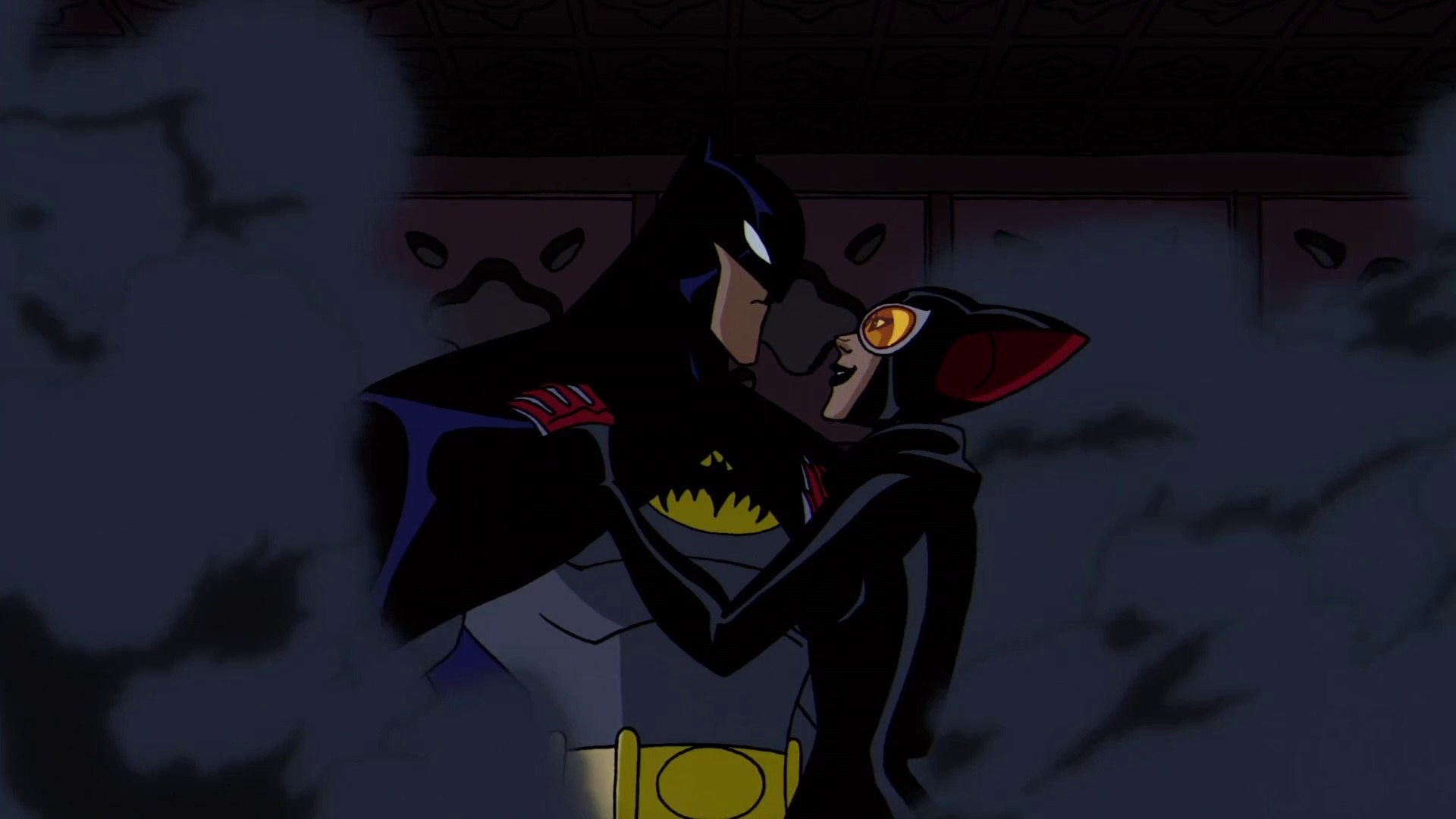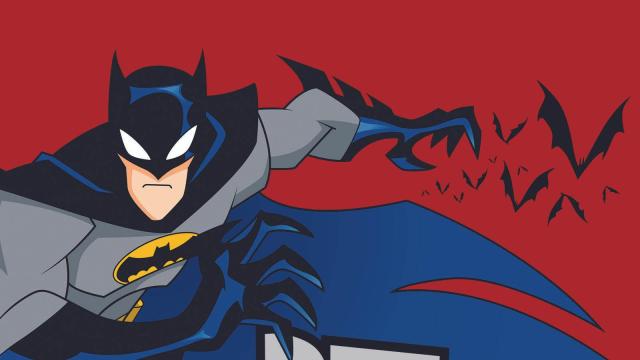Among Kids WB’s many accomplishments, it ended up being a boon for cartoons based on DC Comics characters, ultimately contributing to the creation of the DC Animated Universe. While DC shows would later transition entirely to Cartoon Network for animation, the superhero shows on the network were nothing to shrug at. But while Static Shock and Batman Beyond are always fondly remembered, and 2004’s The Batman deserves its own serving of love.
In rewatching The Batman via HBO Max, it quickly becomes clear how abnormal it was at the time and remains still as both a Batman show and in the general superhero space. One of the things that immediately stands out about the show is its title character, who’s only a few years into being a vigilante. Hearing Rino Romano’s voice — just a few years prior, he voiced Spider-Man on Spider-Man Unlimited over on Fox Kids — really puts into perspective how much younger this take on Bruce Wayne is. He has a laidback vibe befitting a guy in his mid-20s, and the show’s first season highlights this in moments where he builds new tech just for fun or can’t pay attention during an opera concert. Not inexperienced, and not quite comically overpowered, he’s a Batman that’s comfortable in his position as Gotham’s protector, which makes it a perfect time for some actual villains to enter the picture.
The rogues are an important part of any Batman story, and there’s a surprising amount of range in this show instead of relying on heavy hitters. As odd as it first seems for almost all of them to be solid melee fighters, the show commits to this choice, and it keeps the action beats exciting. There’s some fun fights across the show’s run, from a three-way brawl between Batman, Catwoman (Gina Gershon), and Ragdoll (Jeff Bennett) in a clocktower to a late game episode where Batman and Robin (Evan Sabara) face off against the villains across the show’s history.
Much of the fun of the villains can be owed to their designs. Jeff Matsuda of Jackie Chan Adventures fame served as the show’s art director, and there’s a distinct style to everyone that still has some charm today. Making Bane into basically Red Hulk when he uses his Venom or portraying Riddler as a goth twink on his way to the club are the kind of looks that DC stories just aren’t able to do anymore unless they’re explicitly AUs, like a mobile game. Regardless of how they look and fight, their voice actors mostly do a great job in making each villain feel like they belong in this specific version of Batman’s world.
But Penguin and Joker are the highlight of the bunch, and both are some of the more recurring villains of the series. Mainly known at the time for voicing nice or dopey guys, Tom Kenny’s having a lot of fun with Penguin as an absolute sleazebag who repulses everyone he meets. Meanwhile, Kevin Michael Richardson’s deep voice and booming laugh give the show’s Clown Prince a more playful but still deadly edge that stands proudly alongside the raspy wit of Mark Hamill. Since this was before the villain transitioned into being basically a serial killer, his crimes are sinister while still being incredibly goofy, and the show knows how to make him menacing in some pretty inventive ways.
Just from the show’s intro for its first two seasons, you’d think this was a darker take on the Dark Knight for kids, as bat screeches and guitar strums from The Edge give the show moody, noir-ish vibe where Danny Elfman’s theme for Batman: The Animated Series felt grand and adventurous. Often during those first two seasons, that original intro is a misdirect, and an episode can be goofier than you’d believe. While the first two seasons are quite strong, introducing Danielle Judovitz as Batgirl in season three (and later the aforementioned Robin in season four) helps the show find a better idea of its tone. Both young heroes are fun additions to the cast, and the new energetic opening feels like it better fits the episodes for the show’s following three seasons.
For as often as people complain about Batman being “too dark,” The Batman manages to find a strong balance between playful and gritty most of the time. When it hits its balance, you get fun episodes such one early into season two where Joker’s dressed as Batman, attacking civilians for minor crimes while Batman’s in danger of laughing himself to death after being hit with a new dose of Joker Venom. (Romano’s recreation of the Joker laugh is its own kind of unsettling.) Another high point is the finale to season one; after the clown kidnaps Batman’s childhood friend turned cop Ethan Bennett (Steven Harris), part one abruptly ends on the still pretty horrifying visual of Bennett’s face sliding off his skin. Part two, fittingly titled “The Clayface of Tragedy,” opens like a mini-monster movie as Bennett tries to ask for help, only to be attacked and avoided by anyone who catches sight of him. But Bennett disappears for decent stretches of time throughout the show’s run, somewhat neutering the impact of his and Bruce’s relationship. But at least he gets something of a conclusion to his arc, unlike his fellow cop Ellen Yin. Voiced by Ming-Na Wen long before she became the de facto Competent Woman, she’s set up to be a long term ally (and maybe a love interest?) for Batman before she’s just straight up gone after season two.
With how popular Batman is and always has been, it’s genuinely surprising how The Batman just barely avoided the modern day superhero boom. A few episodes into its second season, Batman Begins debuted in theatres, and the series would end in March 2008, a couple months before The Dark Knight would become a box office juggernaut. From there, Christopher Nolan’s more grounded take on the superhero would help chart the character’s path going forward. Rocksteady’s beloved Arkham games drew upon the Nolan for much of its tone and style, and so does Titans, ridiculous of a show that it is. 2013’s Beware the Batman animated series, the immediate successor to the more lighthearted Brave & the Bold, was marketed as being more serious, no doubt because of The Dark Knight Rises.

Meanwhile, both Brave and Lego Batman served as counterarguments to Nolan’s trilogy, showing the Caped Crusader as a light-hearted adventurer or goofy father and deliberately poking fun at the more “adult” take on the character. Even Batman’s handful of appearances over in Teen Titans Go poke plenty of fun at the perception of the hero that Nolan helped popularise. Whether you like Nolan’s trilogy or not, the Batman work that’s followed it since 2005 hovers over Batman and anyone in his orbit like a long shadow, for better and worse.
But The Batman isn’t really in conversation with how the world has seen its Caped Crusader, and in a lot of ways is all the better for it. While it can’t help but feel like a relic of a bygone age, it was a pretty good age where superhero shows just ran off of vibes and experimentation. Similar to Kids’ WB’s other beloved cape series Spectacular Spider-Man and X-Men: Evolution (or arguably Young Justice today), it was free to do its own thing without being caught up in corporate nonsense, nostalgia of dubious merit, or cultural pissing contests. At the end of the day, it’s just a show whose pitch began and ended with: “Batman’s pretty cool. You wanna see him be pretty cool?” And to The Batman’s credit, it was right. He is pretty cool.
